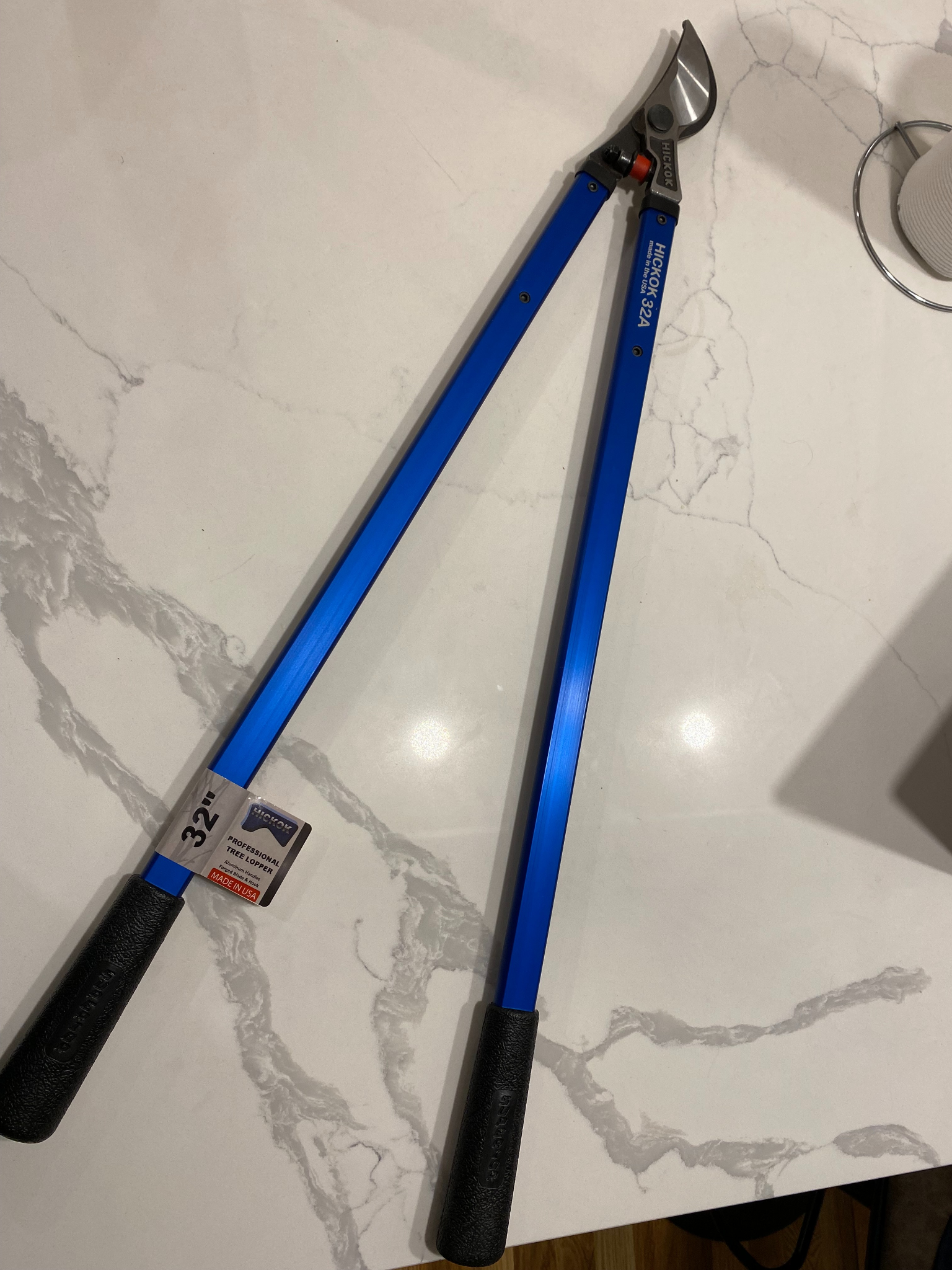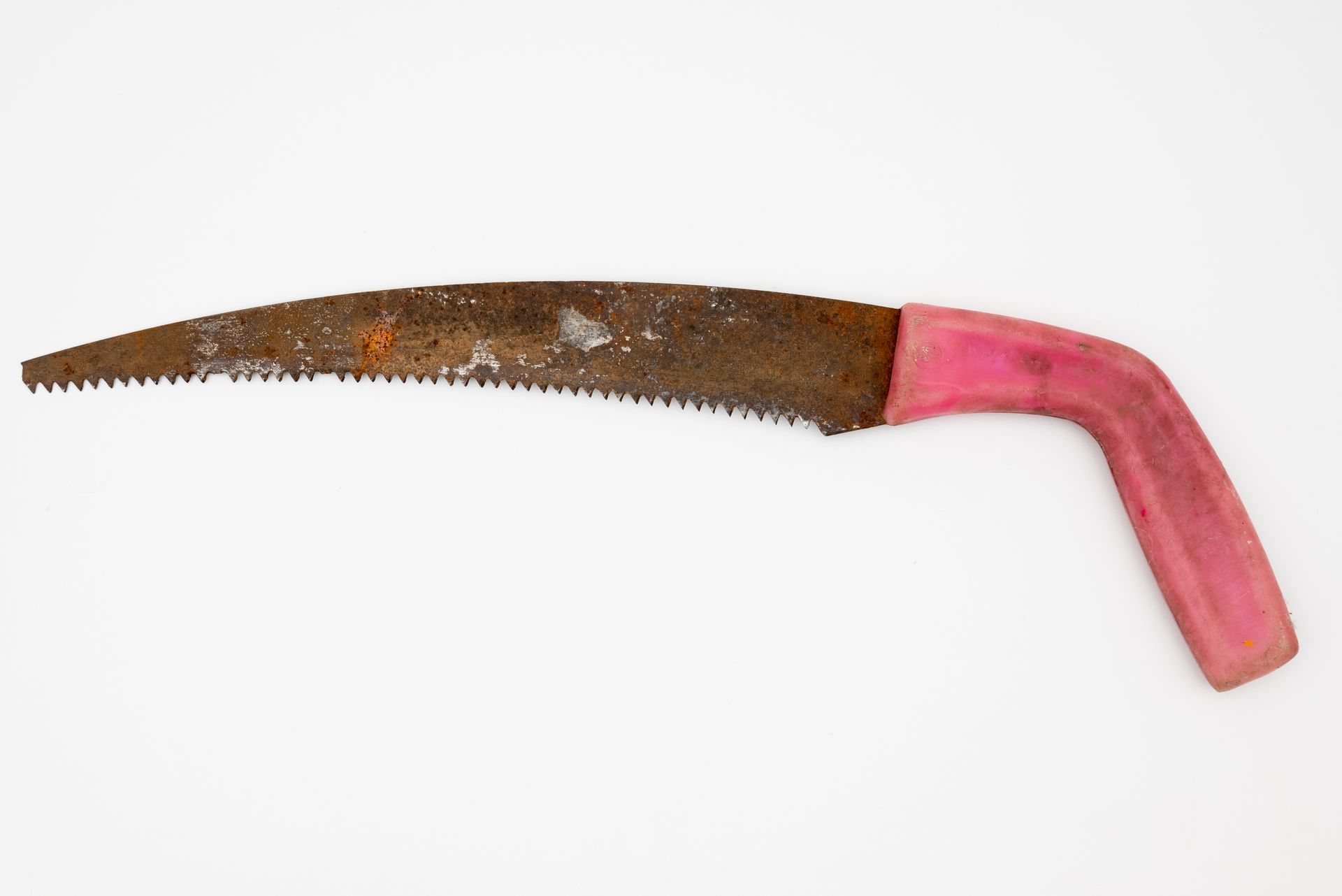How To Sharpen Loppers, Pruners, and Shears

Look no further if you want to know how to sharpen loppers, pruners, and shears. First, clean the tool of any dirt or grime. Take your sharpener and run it against the factory bevel of the blade (usually about 4 to 5 times) until the blade shines. Then turn over the tool and remove the burr. The sharpening process is basically the same for loppers, pruners, and shears, but we'll go into more detail.
Table of Contents
Sharpening Garden Loppers, Pruners, or Pruning Shears
High-quality tree loppers, pruners or pruning shears will come out of the box razor sharp and stay that way for a long time. But at some point, even the sharpest blades begin to dull. And dull pruners are the absolute worst... so what can you do?
Should you buy a new set? Well, you could. Or you could learn how to sharpen the blades (it's pretty easy).
Sharpening pruning shears, tree loppers, or pruners is done in pretty much the the same way. We covered each tool's general steps and then broke them down into specifics.
Gather Your Equipment
Before you begin, make sure to grab everything you need to sharpen your tools:
- The garden tools you need to sharpen (we'll have a different guide soon for chainsaws)
- Sharpening tool
- Coarse steel wool or brush
- Lubricating oil
- Some rags
- Dish soap
Once you have everything you need, then you are ready to begin. If not, you can buy most of this stuff at your local hardware store. It will be much cheaper to buy these supplies than a new set of loppers, so the drive to Home Depot is worth it.
Get Rid of the Dirt
You can't sharpen dirty garden tools. You need to clean them first. If your loppers, pruners, or shears are covered in mud or other debris from then field, then go ahead and wipe that off with a rag and some dish soap. Now would be a good time to clean and sterilize your shears or loppers.
Get as much off as possible because the cleaner the blade, the easier it will be to sharpen. Not only should you get rid of the dirt to sharpen the tool, but also because the tool will function better if it's clean. Getting off any sap might be a bit harder but do your best.
Get Rid of the Rust
You don't want rust on your loppers, pruners, or pruning shears. It's bad for the tool, and it's bad for any plant you want to trim. You can get rid of the rust in two ways:
- Take a wire brush to it, scrape off as much as you can
- Soak the blade in vinegar, then scrape it again in the morning
These two steps should remove rust from the tool and make it much easier for you to sharpen the curved blade of your tools. Try to finish off any remaining rust before proceeding.

Sharpen the Cutting Edge
Run the sharpening tool over the tool against the cutting blade (the sharp edge). For pretty much all loppers, or shears, this is going to be the top blade, or the upper blade, of the tool.
After 4 or 5 passes over the original bevel edge, the blade will begin to sharpen and even shine.
Usually, we use a diamond file that you can purchase from a local hardware store for a few dollars. The smooth edges of the diamond file make the sharpening easy as you can run it easily against the smooth end of the blade.
Start near the inside of the blade (closer to the handle) and sharpen up and out along the blade's edge. It shouldn't take too many passes before you start the blades begin to sharpen. Follow the same angle as the blade.
Remove the Burr
After you spend some time sharpening the beveled edge, you will notice a burr beginning on the flat side of the blade. A burr is a rough edge that forms as you sharpen your loppers, pruners, or shears. Run the tool against the burr a few strokes until you remove it.
You can complete this process with a flat stone if you don't have the diamond sharpening tool. Whatever sharpening tool you have will probably work - it doesn't take much to sharpen these blades.
Worse Thing Can You Do
Beginners often take their sharpening tool and run it along the blade in a back-and-forth motion. You don't want to do this as it can damage the blade.
Linear strokes. Run the tool against the blade from start to finish against the same angle of the blade. Then repeat by taking the tool off the blade, putting it back at the start, and sharpening the blade to finish.
Again, start from the pivot of the loppers, pruners or shears, and run the sharpener to the blade's tip. No back-and-forth motions!
Repeat for the Counter Blade
If you are sharpening bypass loppers, pruners, or shears, the you want to hit the counter blade too. Repeat the same process: sharpen along the angle of the blade, then hit the burr that forms on the back side with a sharpening stone.
Optional: Lubricating Oil
If you want to or have it, now is a good time to add some lubricating oil to the loppers, pruners or shears. Put a drop or two on the lopper nut, and then take a rag and run some oil of where you sharpened.
This will make the tool a bit smoother to use, and it will protect the blade from rust or dirt. If you don't have any oil at your disposal, you can proceed without it, but next time you are at the store, definitely pick some up. A little oil goes a long way!
SNE's Final Say on Sharpening Loppers, Pruners and Shears
Thanks for stopping by! With this guide, you don't need to spend excess money on tools for your garden or trees. You can simply repair them.
That being said, we recommend you buy a quality set of tree branch loppers, pruners, or shears, or else you will be sharpening your tools far more often than you'd like. Cheaper metals wear out much faster, and it's definitely something you can avoid by spending a little more on your tools.
FAQs
Before you go...
Now that you know how to clean and disinfect your pruning shears or loppers, it's time to get out there and start pruning. Be sure to read our guide on the worst mistakes you can make while pruning so you can avoid injuring or hurting your plant...
Related Articles:

Christina Hernandez
Christina has done most of her research on environmental science but recently has changed her focus towards sustainable forestry. She has a passion for the outdoors and wants to spread that passion to the world.
Join our community!
Join to receive guides, insights, and the latest gardening deals!
